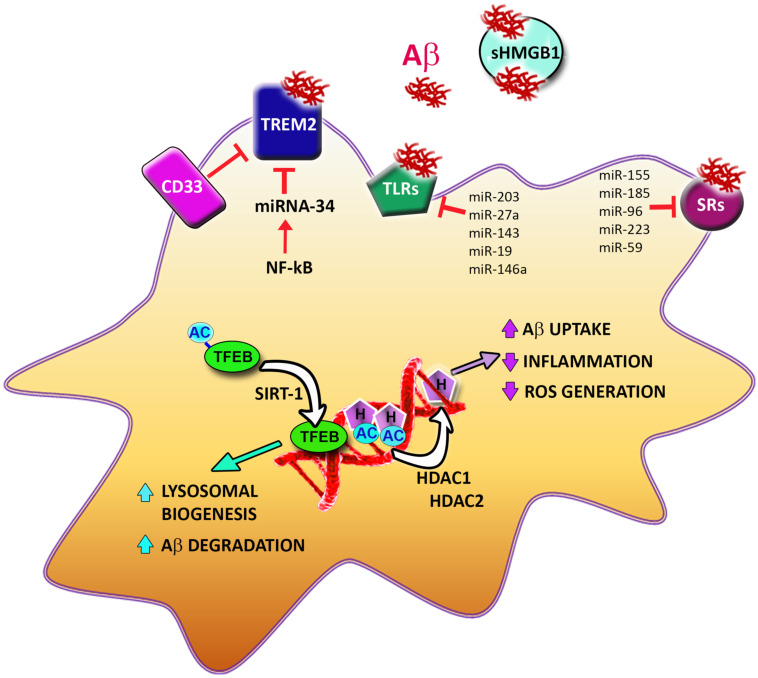Fig. (2).
Microglial interactions with Aβ and epigenetic mechanisms controlling Aβ removal. At the microglial cell surface, aggregated Aβ interacts with the triggering receptor expressed on myeloid cells 2 (TREM2), Toll Like Receptors (TLRs) and Scavenger Receptors (SRs), which all mediate its uptake. CD33 negatively affects TREM2’s ability to bind Aβ. Soluble High Mobility Group Box 1 (sHMGB1) binds to Aβ in the extracellular compartment, preventing its uptake. Epigenetic mechanisms affect multiple steps involved in Aβ removal. NF-kB increases transcription of miRNA-34, which represses TREM2 production. A number of other miRNAs regulate the expression of TLRs and SRs. The transcription factor EB (TFEB) is activated by SIRT1-mediated deacetylation and upregulates genes involved in lysosome biogenesis and Aβ degradation. Histone (H) deacetylation by histone deacetylases (HDAC) 1 and 2 leads to upregulation of genes involved in Aβ uptake and downregulation of genes involved in inflammation and radical oxygen species (ROS) generation. (A higher resolution / colour version of this figure is available in the electronic copy of the article).

